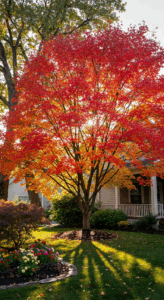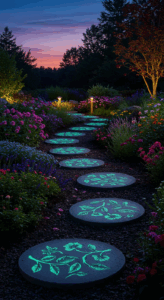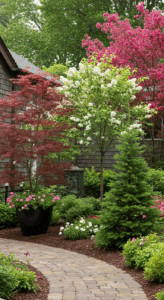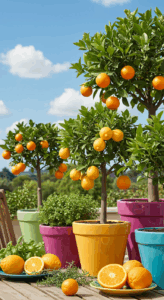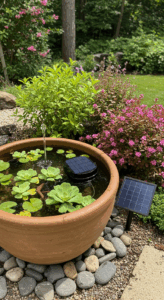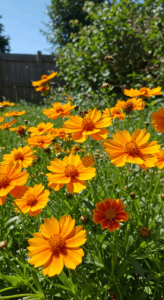1. Lettuce: The Leafy Powerhouse of Indoor Gardening

Lettuce is the quintessential leafy powerhouse for indoor gardening, making it an ideal choice for beginners. Thriving in a variety of containers, from small pots to hydroponic systems, lettuce grows quickly and can be harvested multiple times, giving you a continuous supply of fresh greens. With minimal light requirements, it can flourish under standard fluorescent lights or in bright windowsills, making it adaptable to various indoor conditions. Varieties like butterhead, romaine, and leaf lettuce are not only easy to grow but also offer diverse flavors and textures for your salads. Regular watering and well-drained soil are crucial, ensuring that your lettuce remains crisp and healthy. By incorporating this nutritious vegetable into your indoor garden, you’ll enjoy the satisfaction of growing your own food while enhancing your culinary creations.
2. Radishes: Quick and Crunchy Comforts for Your Kitchen
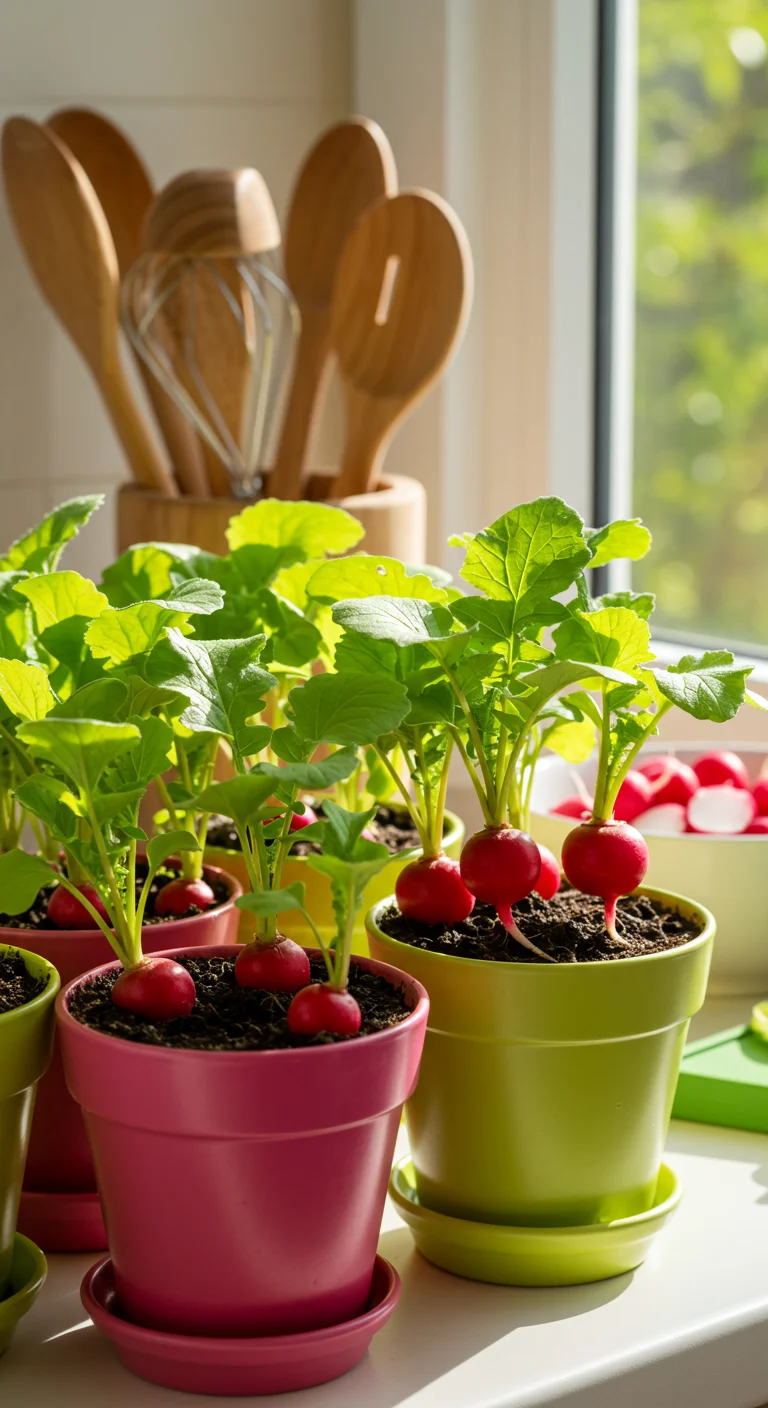
Radishes are an ideal choice for indoor gardening, especially for beginners looking for quick results. These vibrant, crunchy vegetables can be harvested in as little as three to four weeks after planting, making them a satisfying choice for novice gardeners. Radishes thrive in well-drained potting soil and require minimal care, needing only regular watering and consistent light. They can be grown in small containers, making them perfect for windowsills or kitchen countertops. Additionally, their peppery flavor adds a zesty kick to salads and sandwiches, encouraging creativity in the kitchen. To ensure a continuous supply, consider sowing seeds every couple of weeks, allowing for staggered harvests throughout the season. With their vibrant colors and ease of growth, radishes are sure to bring joy and crunch to your indoor gardening experience.
3. Herbs Galore: Basil, Thyme, and More
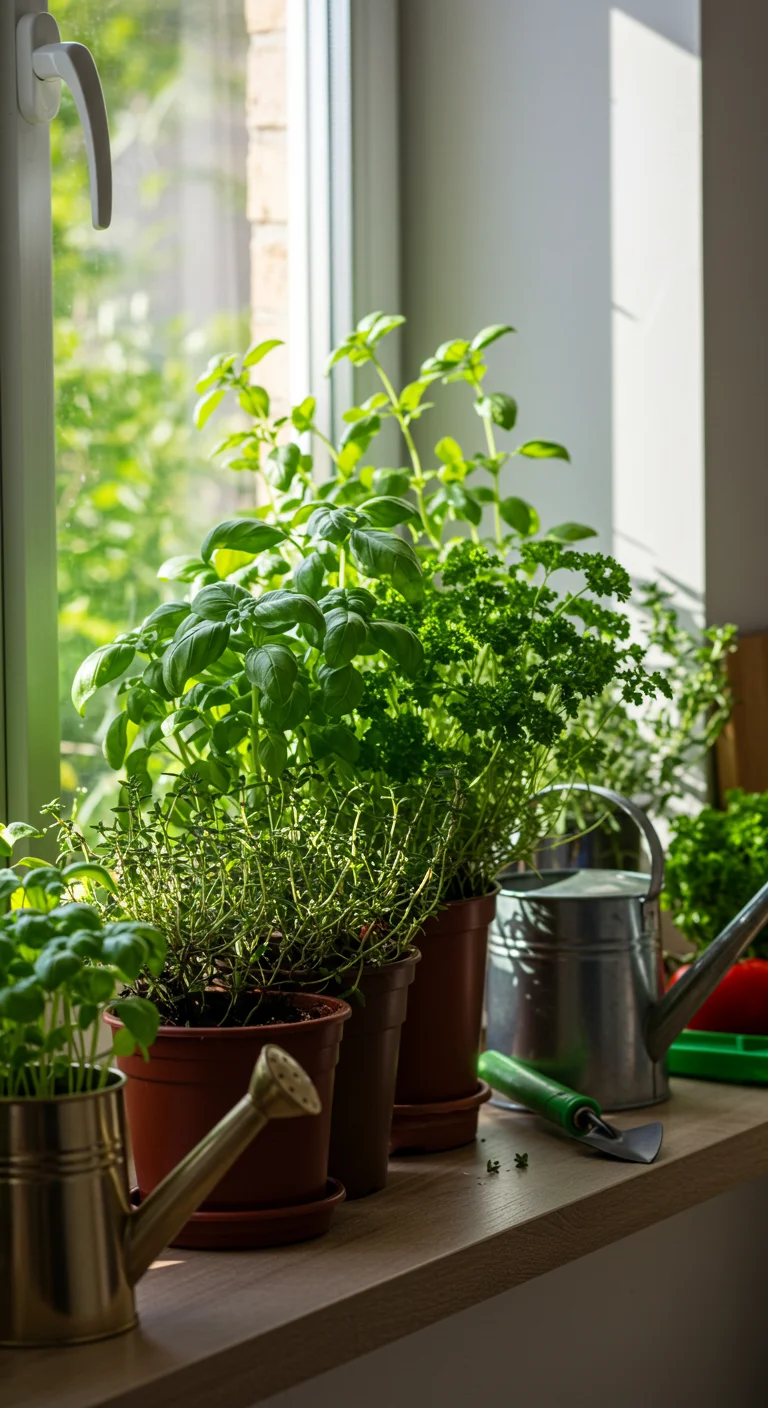
Herbs like basil, thyme, and parsley are not only easy to grow indoors, but they also add fresh flavors to your meals. These herbs thrive in small pots on a sunny windowsill or under grow lights, requiring minimal space and care. Basil, with its vibrant green leaves, thrives in warm temperatures and prefers well-drained soil; regular pinching back encourages bushier growth. Thyme, a hardy herb, needs less water and can tolerate some neglect, making it perfect for beginners. Parsley, on the other hand, takes a bit longer to germinate but rewards your patience with lush green foliage. By incorporating these herbs into your indoor garden, you’ll enjoy the satisfaction of cultivating your own fresh ingredients right at home, enhancing both your cooking and your living space.
4. Spinach: Nutrient-Dense Greens for Every Meal
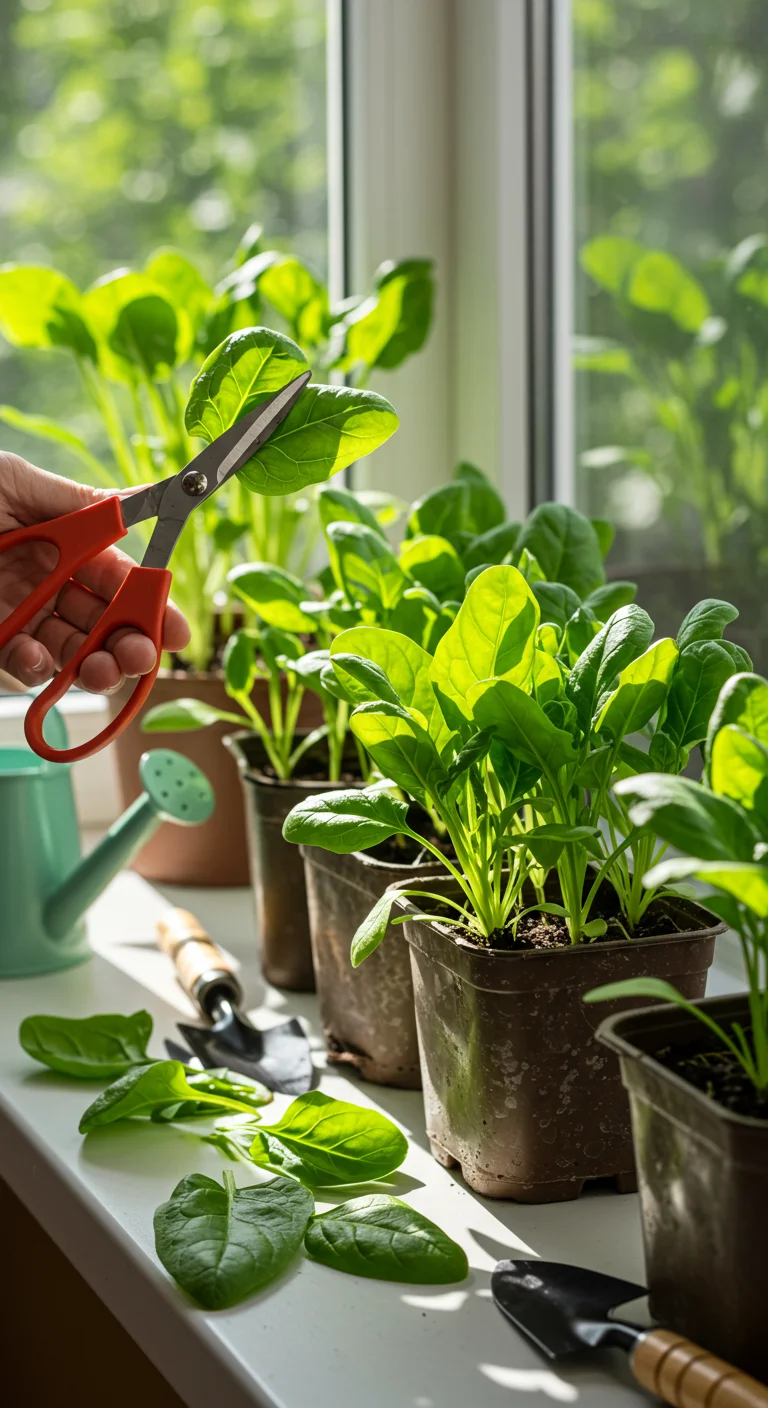
Spinach is a powerhouse of nutrients, making it an ideal choice for indoor gardening, even for beginners. This leafy green is rich in vitamins A, C, and K, as well as iron and calcium, providing a health boost to any meal. Growing spinach indoors is simple; it thrives in cooler temperatures and can be cultivated in small pots or hydroponic systems. Ensure your spinach receives at least 6 hours of indirect sunlight daily and keep the soil consistently moist but not waterlogged. You can start with seeds or young plants, and with regular harvesting, this fast-growing vegetable can yield multiple crops throughout the year. Incorporate fresh spinach into salads, smoothies, and sautés for a nutritious boost to your diet.
5. Green Onions: The Easy-to-Grow Flavor Booster
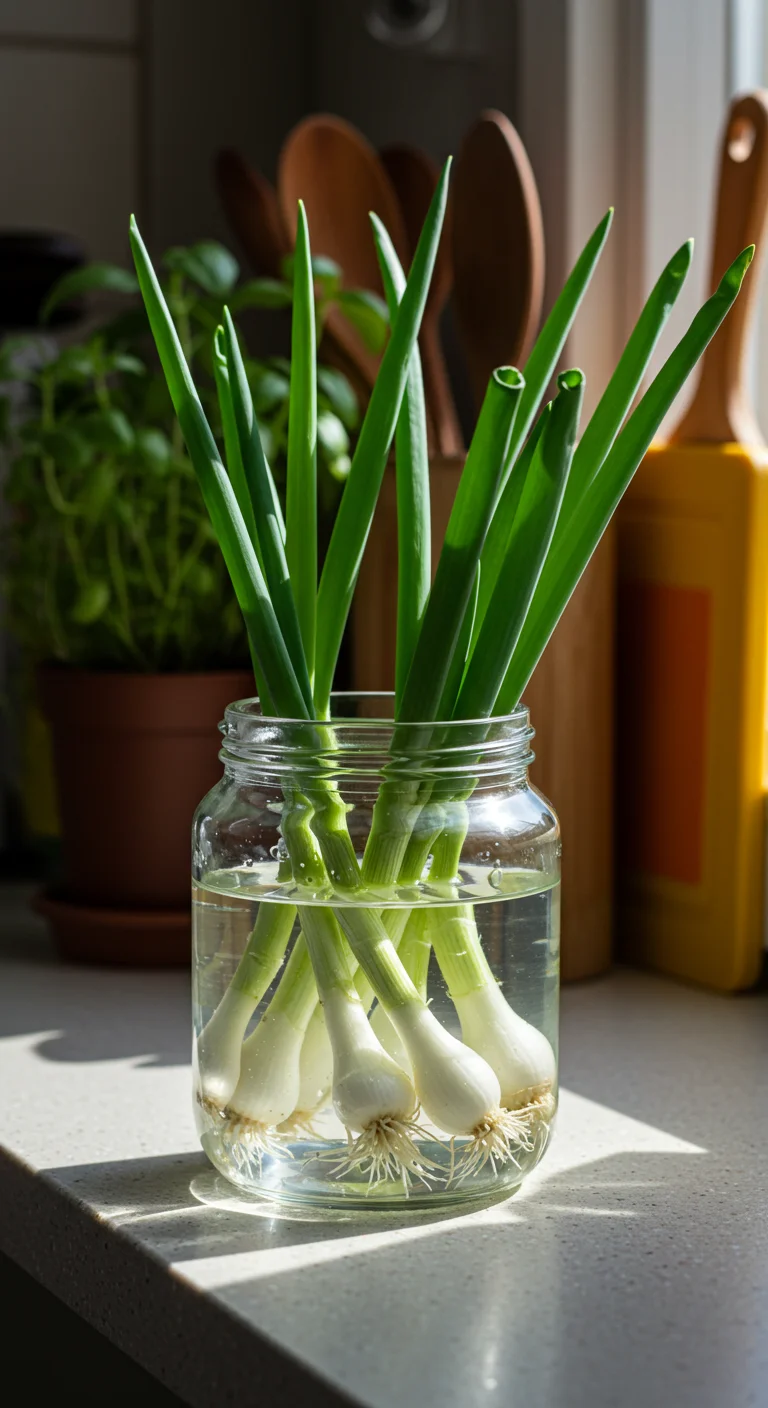
Green onions, also known as scallions or spring onions, are a perfect choice for indoor gardening, especially for beginners. They require minimal space and can thrive in small pots or even in jars with water. To grow them, simply purchase a bunch from the grocery store, cut off the root ends, and place them in a jar with enough water to cover the roots, ensuring the green tops remain above the waterline. Place the jar in a sunny windowsill, and watch as they regrow in just a week! You can snip off the greens as needed, enhancing salads, soups, and omelets with fresh flavor. Not only are they easy to grow, but they also add a pop of green to your indoor garden, making them an attractive and useful addition to your culinary endeavors.
6. Microgreens: Tiny Nutritional Giants
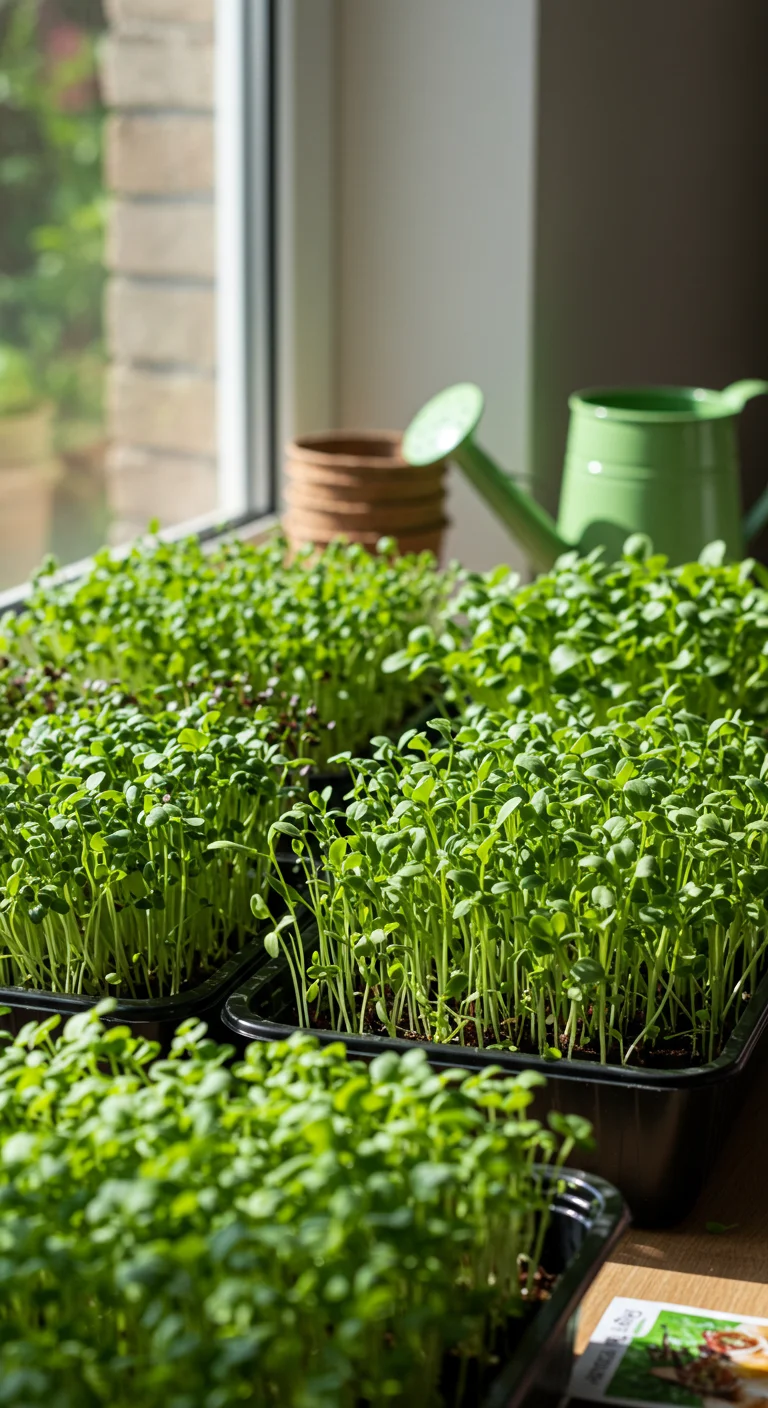
Microgreens are small, edible plants harvested just after the first true leaves emerge, making them perfect for indoor gardening. They are packed with nutrients, often containing higher concentrations of vitamins and minerals than their mature counterparts. Growing microgreens is incredibly easy, requiring minimal space and just a few supplies like seeds, a shallow tray, potting soil, and adequate light. Simply sow the seeds in the soil, water lightly, and place them in a sunny spot or under grow lights. In as little as 7-14 days, you can enjoy a fresh harvest of peppery arugula, crunchy radish greens, or delicate basil. Not only do they add flavor and nutrition to meals, but they also bring vibrant colors to your indoor garden, making them a delightful choice for beginners.
7. Baby Carrots: The Fun and Flavorful Indoor Crop
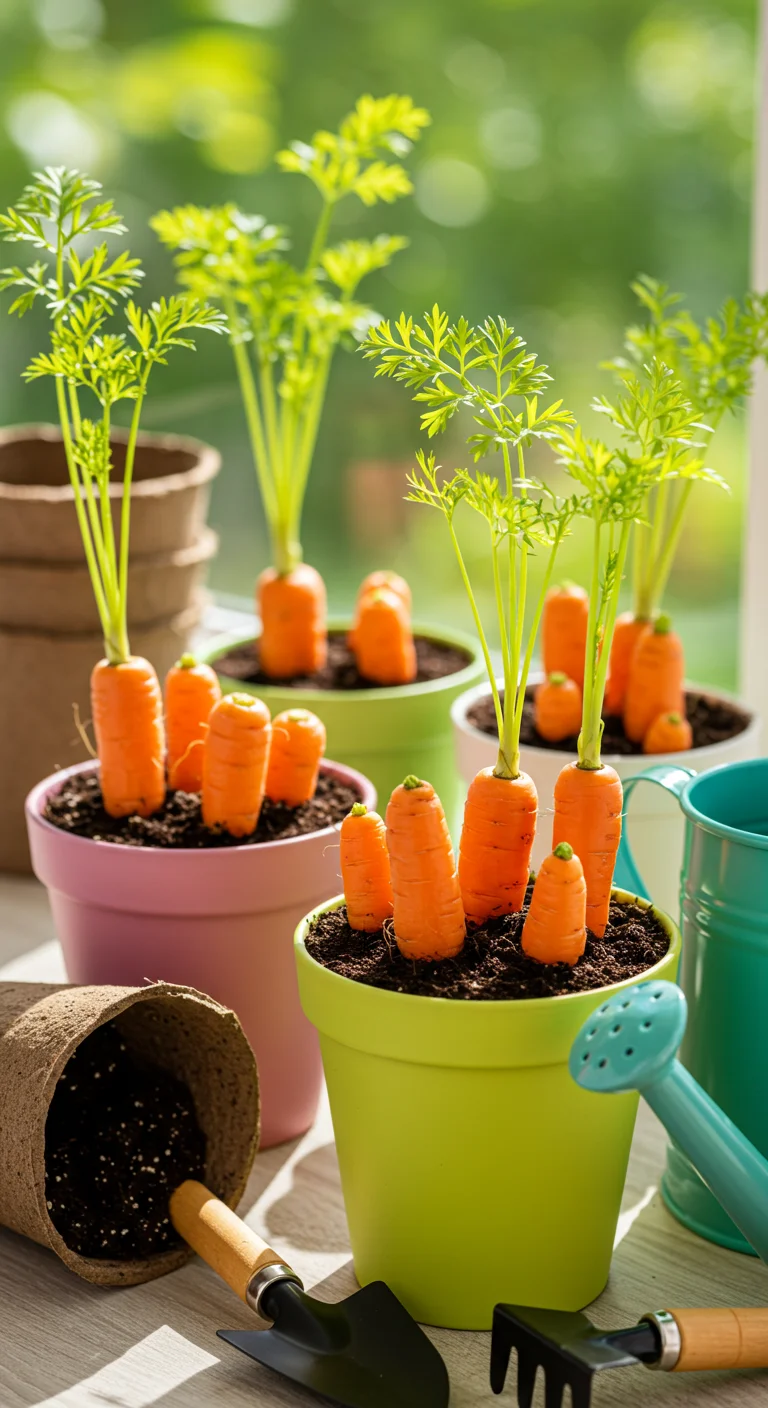
Baby carrots are a delightful and rewarding indoor crop, perfect for novice gardeners looking to cultivate fresh produce with minimal fuss. These petite vegetables thrive in containers, requiring only a depth of 12 inches and well-draining, nutrient-rich soil. With a light exposure of 6 to 8 hours a day, you can easily grow them on a sunny windowsill or under grow lights. Keep the soil consistently moist but not soggy, and thin out seedlings to ensure adequate space for each carrot to develop. Baby carrots are not only fun to grow but also add a burst of flavor to salads and snacks, making them an excellent choice for indoor gardening enthusiasts seeking a tasty harvest in a small space.
8. Peppers: Spice Up Your Space with Color
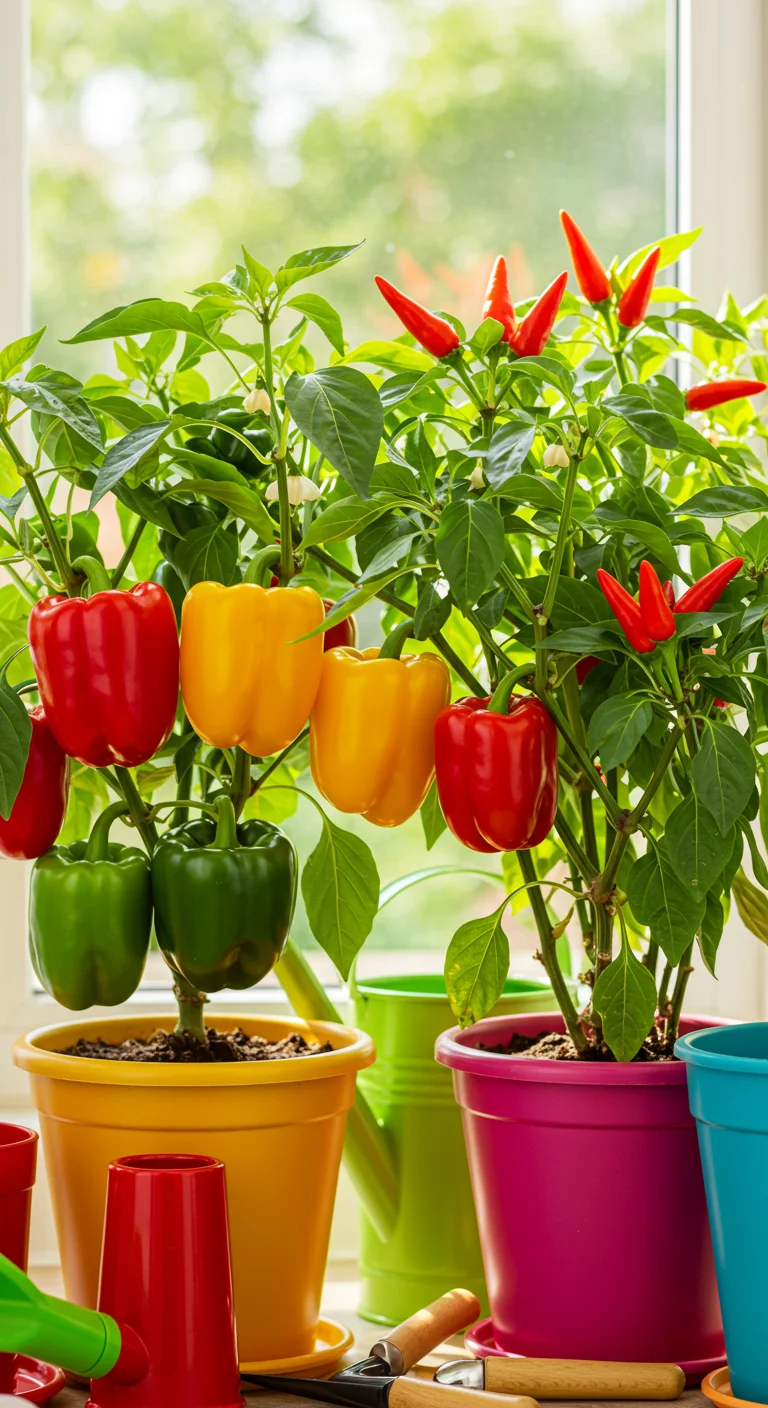
Peppers are a vibrant addition to any indoor garden, offering not only a burst of color but also a variety of flavors. Whether you choose sweet bell peppers or fiery chili varieties, they thrive in pots with well-draining soil and plenty of sunlight—ideally 12 to 16 hours a day. Start with smaller varieties such as ‘Mini Bell’ or ‘Jalapeño’ to avoid space issues. Regular watering is essential, but be careful not to overwater; the soil should be moist but not soggy. You can enhance growth by using a balanced fertilizer every few weeks. Not only will these plants bring life to your space, but they also reward your efforts with delicious produce that can elevate your culinary creations.
9. Tomatoes: Sweet Success with Dwarf Varieties
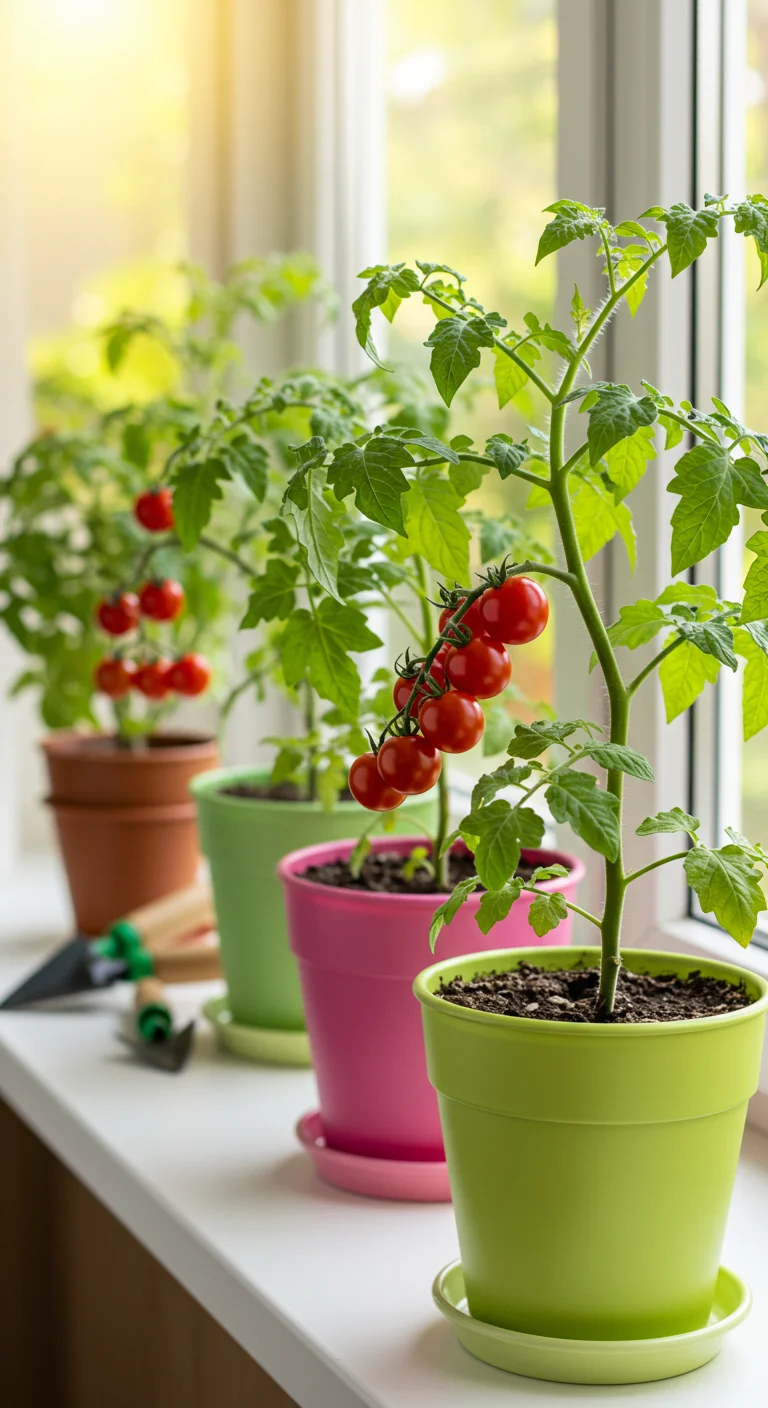
Tomatoes are a staple in many kitchens, and growing dwarf varieties indoors can yield sweet, juicy fruits even in limited space. Dwarf tomato plants, such as ‘Tiny Tim’ and ‘Patio Princess,’ thrive in pots, making them perfect for windowsills or small balconies. To ensure their success, choose a pot with good drainage and use high-quality potting soil rich in nutrients. Provide ample sunlight, aiming for at least 6-8 hours a day, and keep the soil consistently moist but not soggy. Regularly fertilizing with a balanced, water-soluble fertilizer can boost growth and fruit production. With a little care, you can enjoy a bountiful harvest of fresh tomatoes right from your indoor garden, adding a delightful touch to your meals.
10. Cucumbers: Refreshing Crunch from Container Gardening
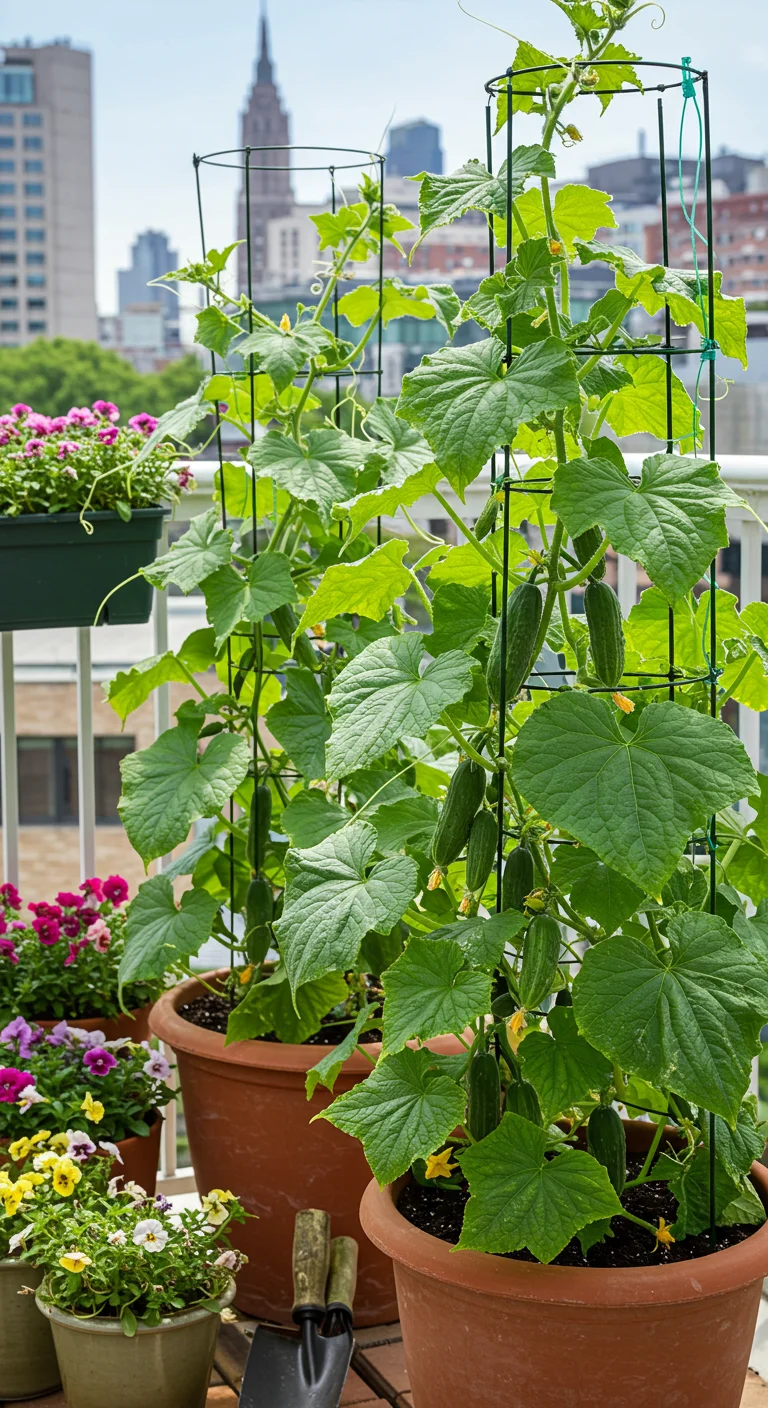
Cucumbers are an excellent choice for container gardening, offering a refreshing crunch and abundant harvests even in limited spaces. These fast-growing vegetables thrive in pots that are at least 5 gallons in size, allowing their roots ample room to develop. Choose a sunny spot for your containers, as cucumbers require at least 6-8 hours of sunlight daily. For best results, opt for bush varieties like ‘Patio Snacker’ or ‘Miniature White,’ which are compact and perfect for small spaces. Ensure consistent watering to keep the soil moist but not soggy; using a trellis can maximize vertical space and promote air circulation, reducing disease risks. With a little care, you’ll enjoy crisp, home-grown cucumbers right from your kitchen balcony or patio.
11. Chard: The Colorful Leafy Green with a Twist
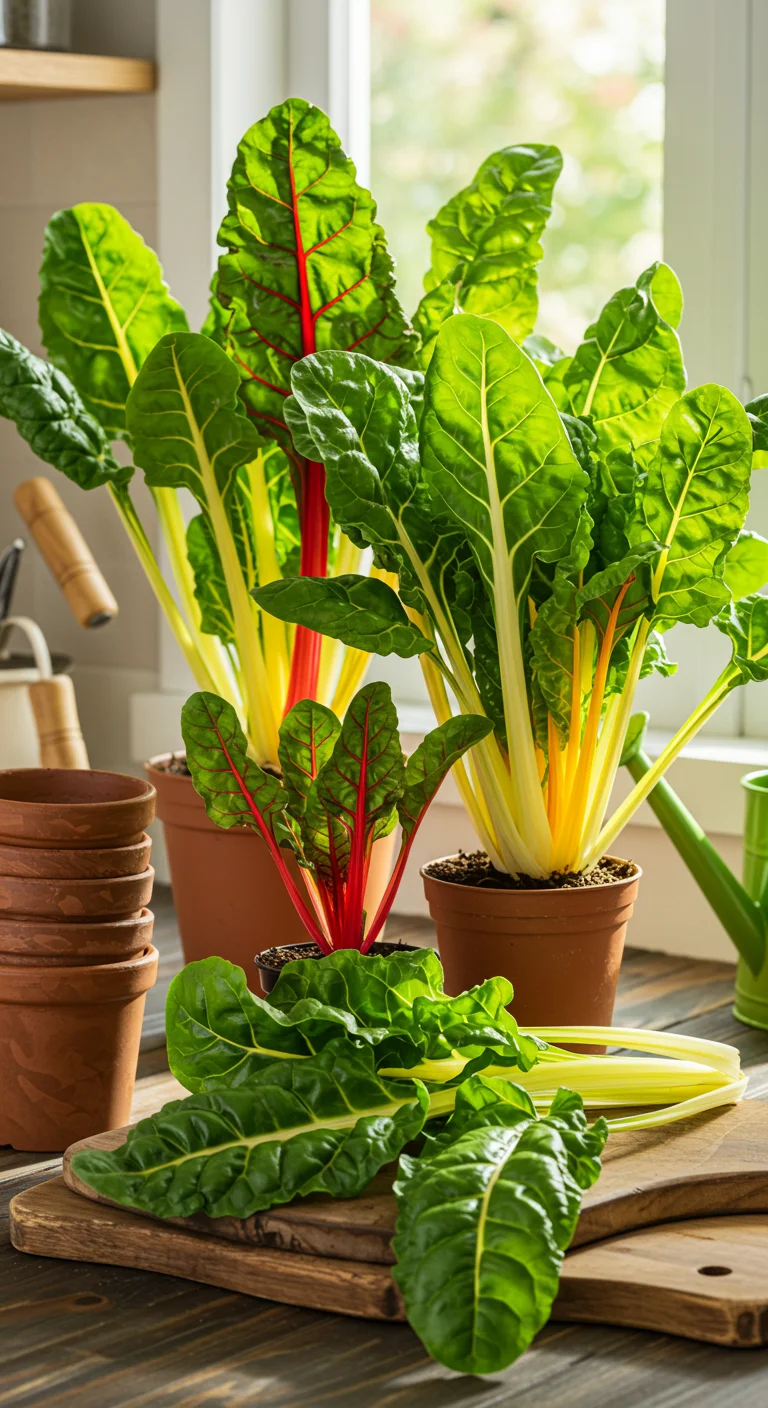
Chard, with its vibrant stems and broad, crinkly leaves, is an excellent choice for novice indoor gardeners looking to add a splash of color to their home. This nutrient-rich leafy green thrives in containers, making it perfect for small spaces. Chard prefers cooler temperatures, so placing it near a sunny window or under grow lights for about 12 hours a day is ideal. Regular watering is essential, but ensure the soil drains well to prevent root rot. You can start chard from seeds or buy seedlings; either way, this hardy vegetable will yield a continuous harvest as you cut the outer leaves, allowing the center to grow back. Rich in vitamins A, C, and K, chard not only beautifies your indoor garden but also enhances your meals with its slightly earthy, sweet flavor.
12. Arugula: Peppery Greens for the Adventurous Palate
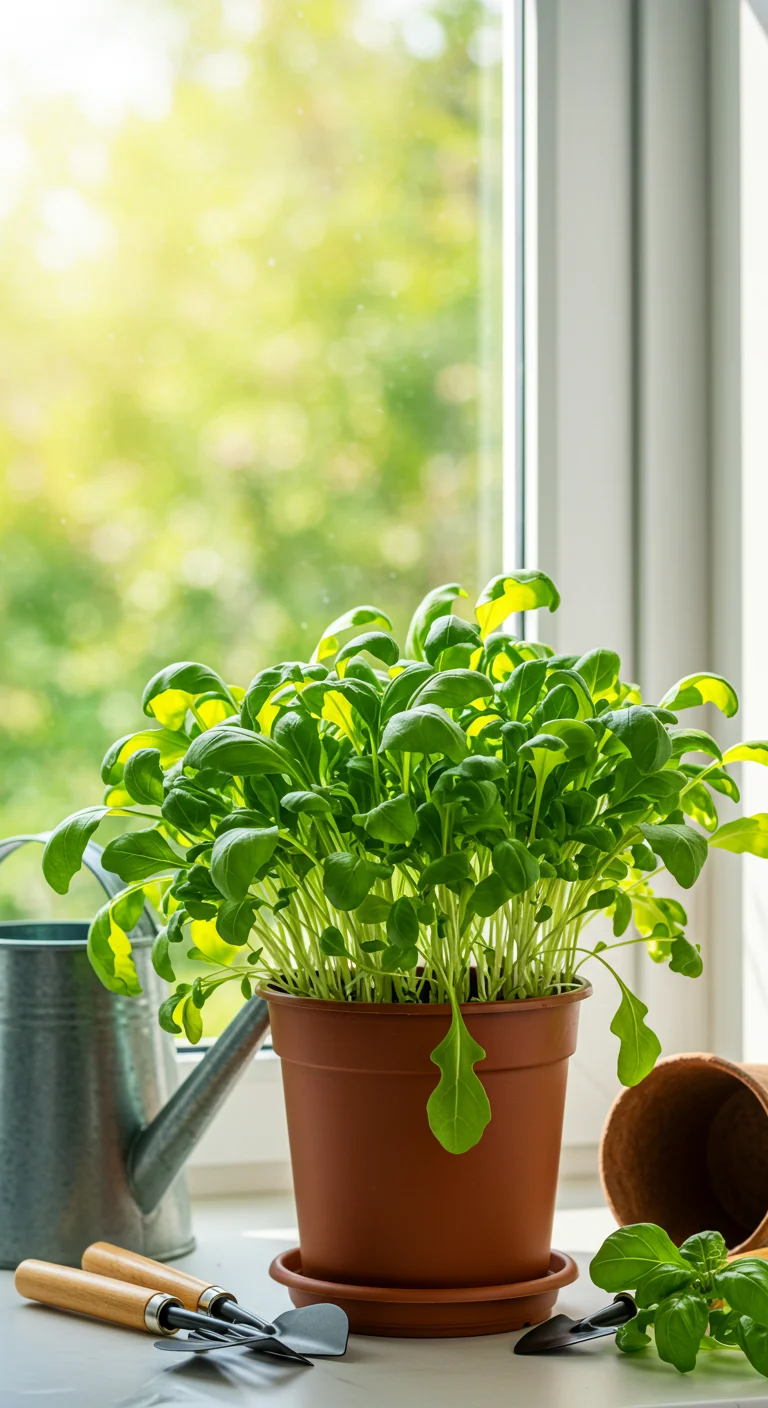
Arugula, with its distinctive peppery flavor, is an excellent choice for adventurous indoor gardeners looking to add a zing to their meals. This leafy green thrives in cooler temperatures, making it perfect for growing indoors throughout the fall and winter. To successfully cultivate arugula, select a pot with good drainage and use a quality potting mix. Sow seeds directly into the soil about half an inch deep, ensuring they are spaced adequately for growth. Water the soil lightly and place the pot in a location with bright, indirect sunlight. With a little patience, you can begin harvesting your arugula leaves in just three to four weeks. Use them fresh in salads, sandwiches, or as a flavorful garnish, and enjoy the satisfaction of growing your own spicy greens right in your kitchen.
13. Bok Choy: Asian Greens for Stir-Fries and Salads
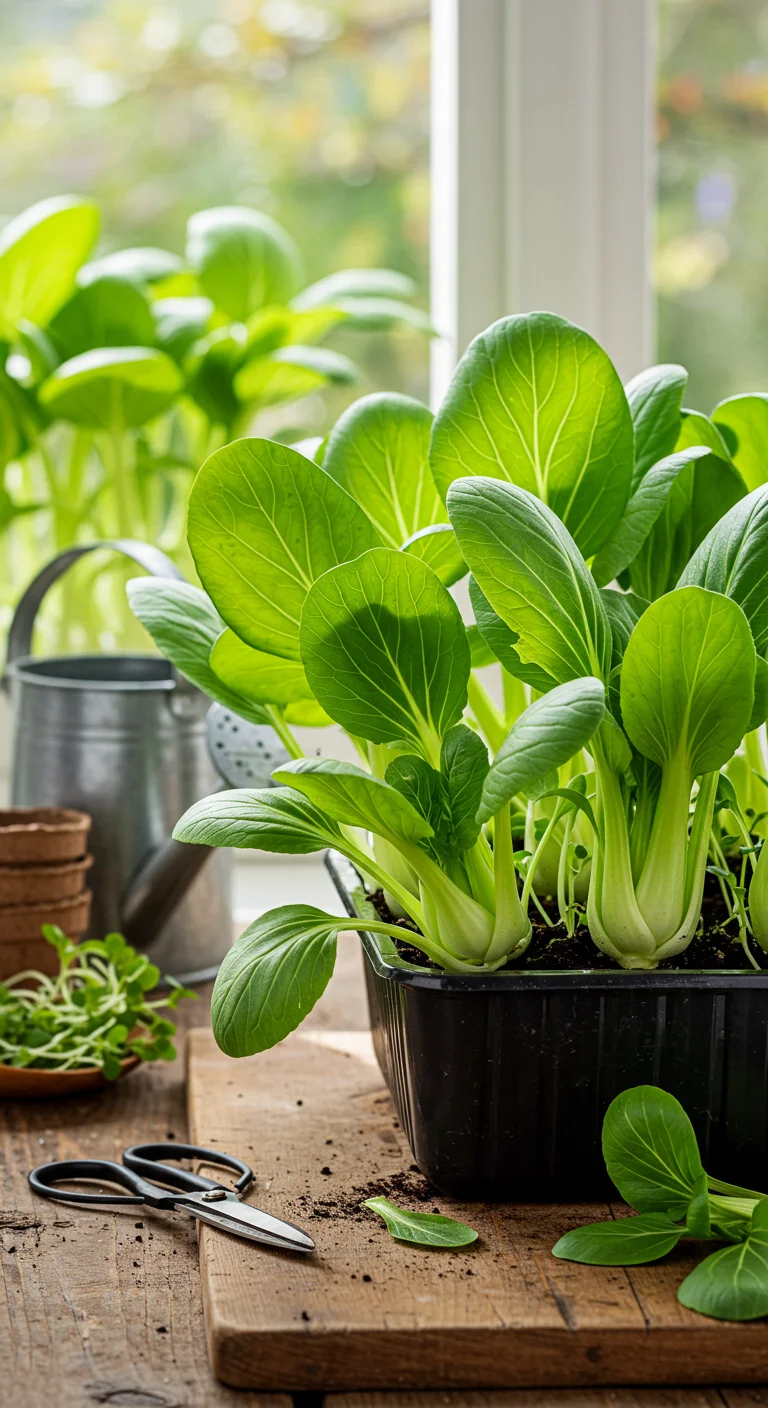
Bok choy, a type of Chinese cabbage, is a versatile green that thrives in indoor environments, making it perfect for beginner gardeners. Known for its crisp texture and mild flavor, bok choy can be easily grown from seeds in containers with good drainage. It prefers cooler temperatures, typically between 60-70°F, and requires consistent moisture to prevent bitterness. This leafy vegetable grows quickly, allowing for multiple harvests in a single season. Use bok choy in stir-fries, soups, or fresh salads for a nutritious boost. To ensure optimal growth, provide it with plenty of light, ideally 12-14 hours a day, and use nutrient-rich potting soil. With proper care, you can enjoy fresh, homegrown bok choy right from your kitchen!
14. Zucchini: Compact Varieties for Vertical Growth

Zucchini is a fantastic choice for indoor gardening, especially when opting for compact varieties designed for vertical growth. These dwarf zucchini plants, such as ‘Patio Star’ or ‘Baby Boo,’ thrive in limited space and can be easily trained to climb using trellises or sturdy stakes. This vertical gardening method not only maximizes your indoor area but also improves air circulation and sunlight exposure, leading to healthier plants and better yields. Zucchini prefers well-drained, nutrient-rich soil and requires consistent moisture, so ensure to water them regularly. With minimal care and the right conditions, you can enjoy a bountiful harvest of fresh zucchini right from your living room or kitchen window sill.
15. Beets: Rooted Beauty and Deliciousness
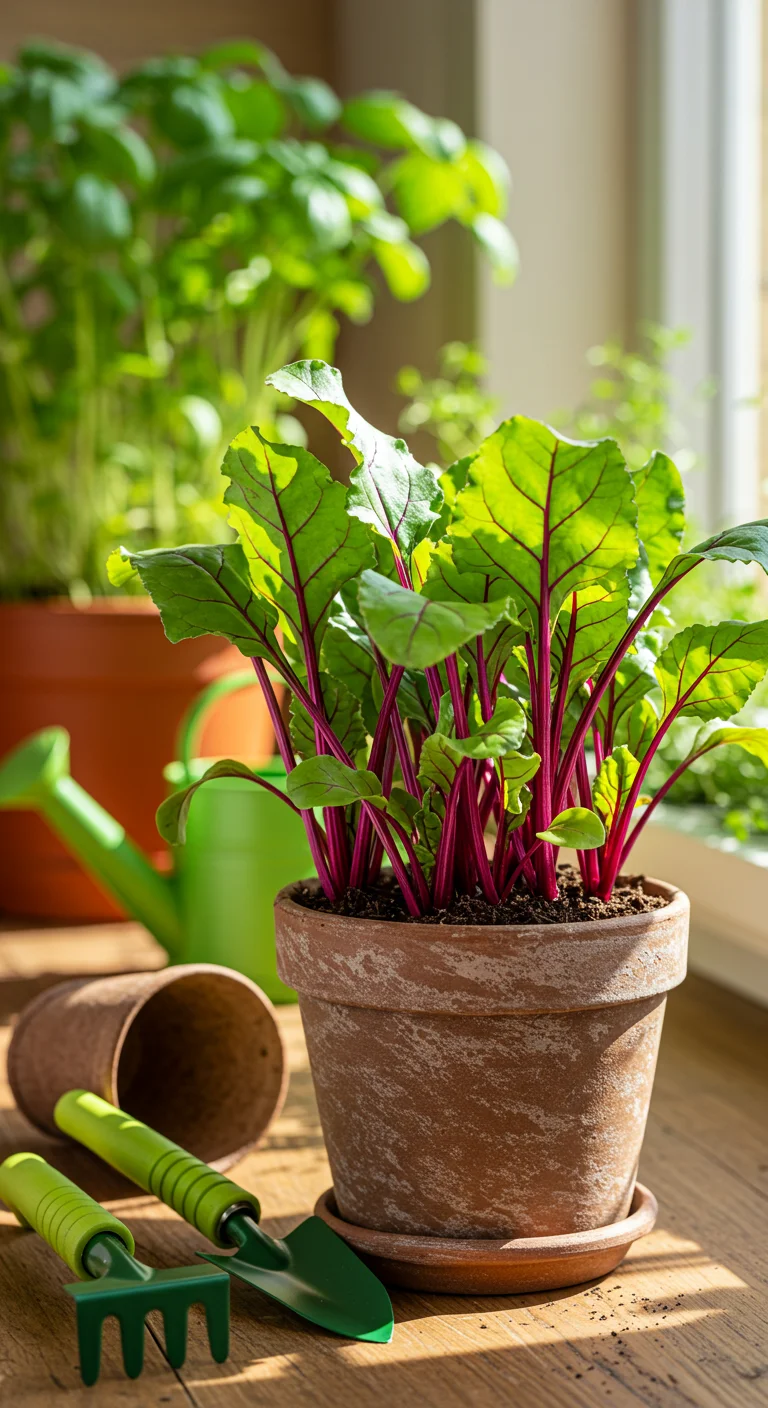
Beets are a fantastic choice for indoor gardening, offering both vibrant color and exceptional taste. These root vegetables thrive in smaller spaces, making them perfect for pots or containers on windowsills. When growing beets, ensure they receive at least 6 hours of sunlight daily, and keep the soil consistently moist but not waterlogged. You can start from seeds or transplant seedlings, spacing them about 2-4 inches apart. Within a few weeks, you’ll witness their leafy greens sprouting, followed by the development of their sweet, earthy roots. Beets are nutrient-rich, packed with vitamins and minerals, and can be enjoyed raw, roasted, or pickled, bringing versatility to your meals while enhancing the aesthetic of your indoor garden.
16. Sweet Potatoes: A Unique Indoor Root Vegetable
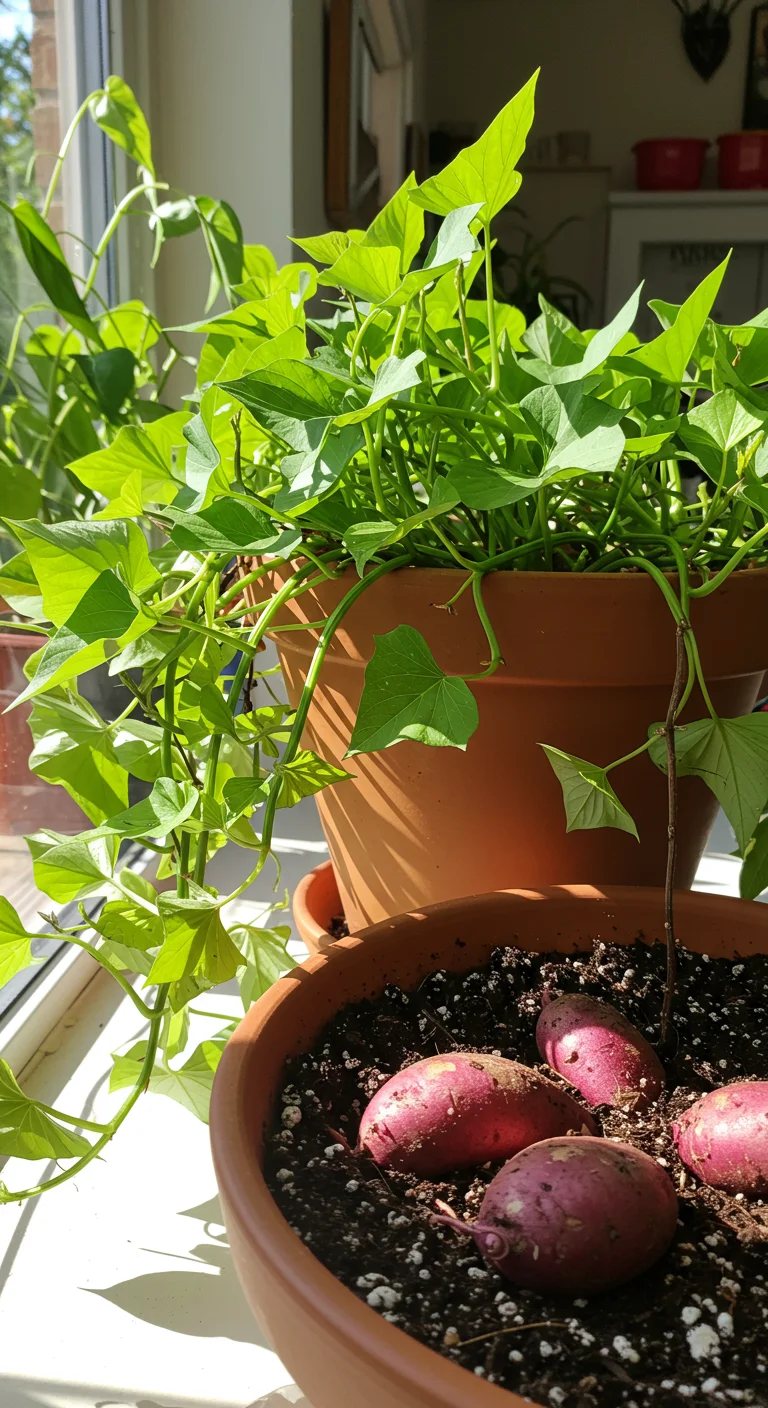
Sweet potatoes are an excellent choice for novice indoor gardeners, as they not only provide nutritious tubers but also serve as beautiful ornamental plants. To grow sweet potatoes indoors, start with slips or small tubers placed in a container filled with well-draining soil. Position them in a bright spot with at least six hours of sunlight daily, or supplement with grow lights if needed. Water the plants regularly to keep the soil moist but not soggy, and ensure good drainage to prevent rot. As they grow, sweet potato vines will cascade beautifully over the sides of the pot, adding a lush, green aesthetic to your indoor space. After several months, you’ll be rewarded with a bountiful harvest of sweet potatoes, which can be used in a variety of delicious dishes.
17. Garlic: Flavor and Health in Every Clove
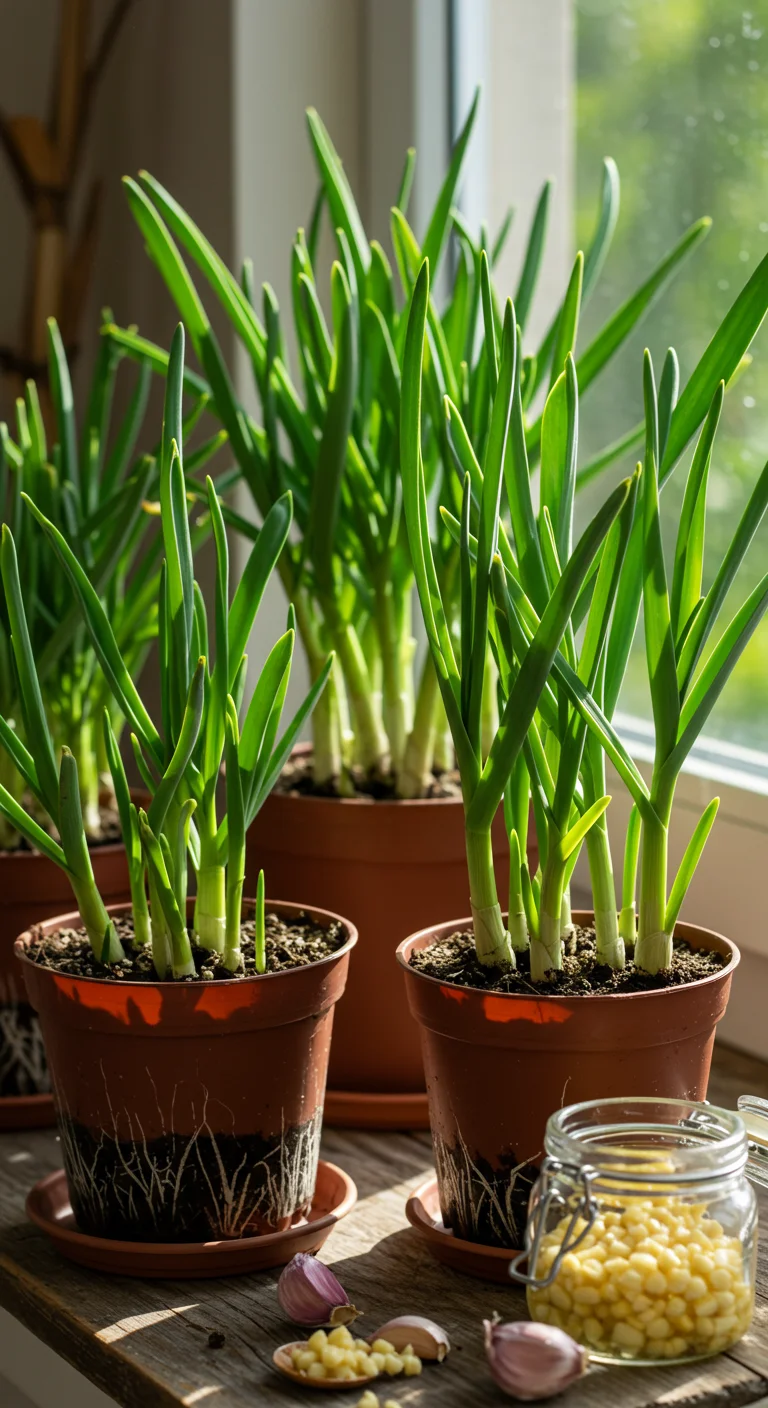
Garlic is not only a culinary powerhouse but also a health booster, making it an ideal choice for indoor gardening. This hardy vegetable thrives in pots, requiring minimal space and effort. Plant individual cloves in well-draining soil, ensuring they receive plenty of sunlight—about six hours per day. Water them sparingly, allowing the soil to dry out between watering to prevent rot. As they grow, garlic bulbs will develop beneath the soil, and within just a few months, you’ll be rewarded with a fresh harvest. Rich in antioxidants and known for its medicinal properties, garlic can enhance the flavor of your dishes while also supporting your immune system. With its ease of growth and numerous benefits, garlic is a must-have for any indoor gardener.
18. Fennel: An Anise-Flavored Gem for Your Indoor Garden
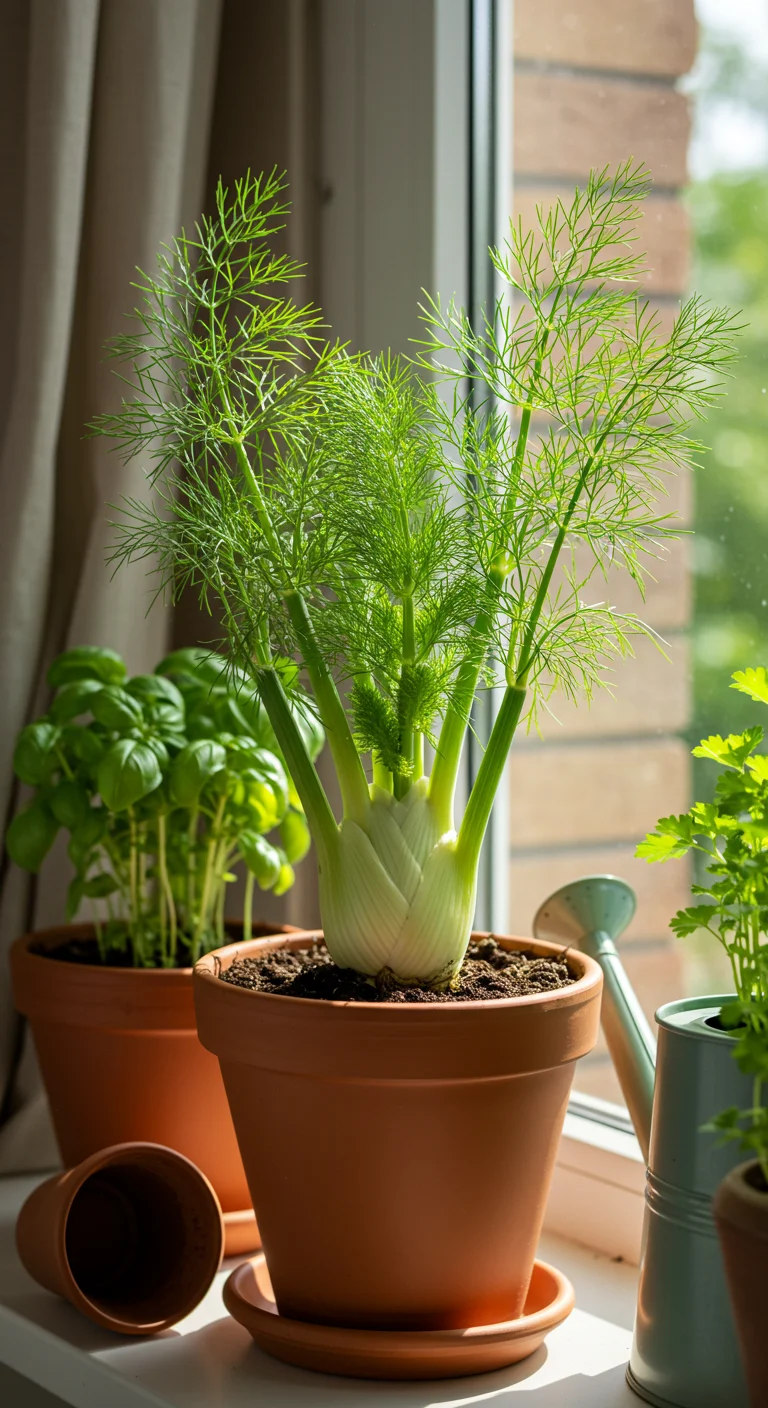
Fennel is an exceptional addition to your indoor garden, thanks to its unique anise flavor and aromatic qualities. This herb thrives in well-draining soil and requires at least six hours of indirect sunlight daily; a bright windowsill is ideal. To grow fennel indoors, start with seeds or young plants, ensuring they are spaced adequately to promote airflow. Regular watering is essential, but avoid overwatering to prevent root rot. Fennel can be harvested at various stages; for the best flavor, pick the bulbs when they are about 3-4 inches in diameter. This versatile herb can be used fresh in salads, soups, or roasted dishes, making it a delightful and practical choice for any indoor gardener seeking a flavorful herb with minimal fuss.
19. Cauliflower: Indoor-Friendly Varieties to Try
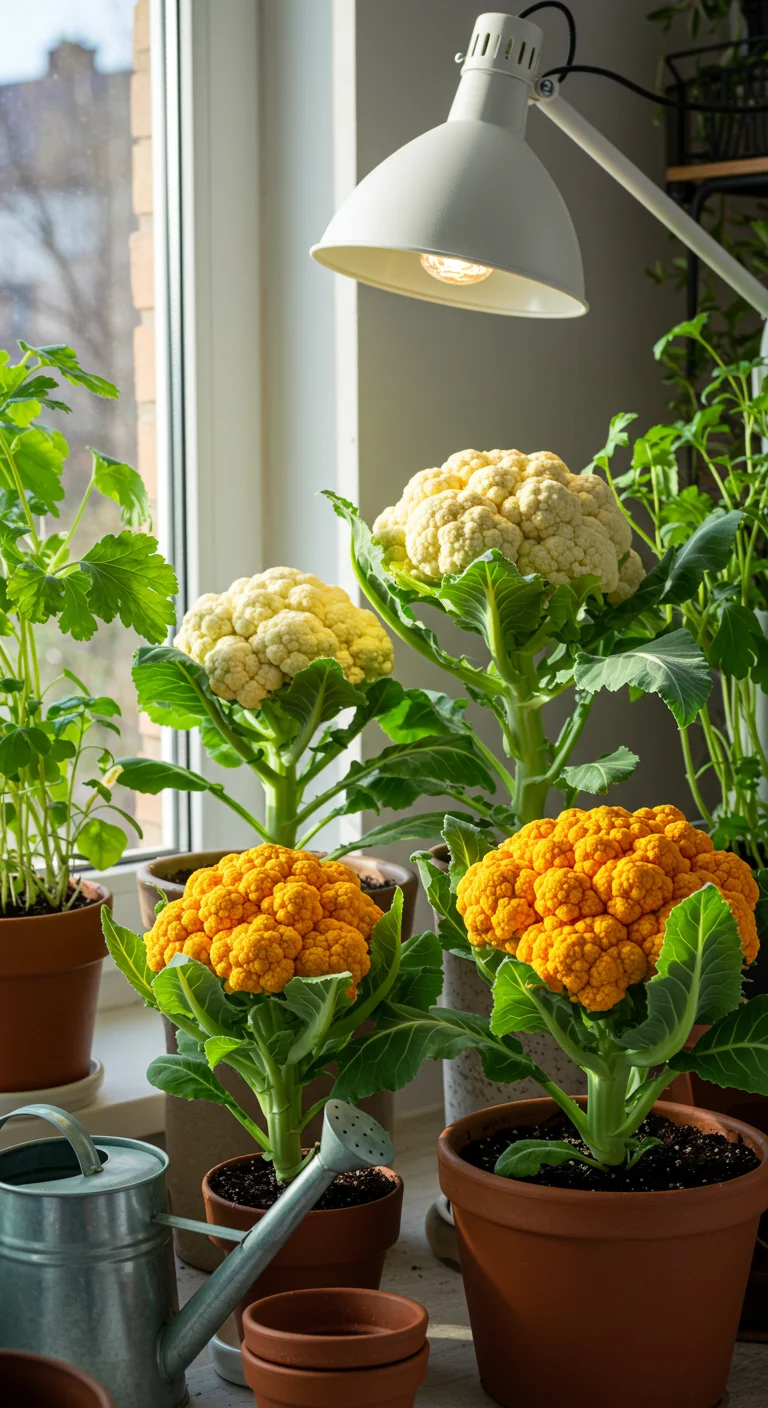
Cauliflower is a versatile vegetable that can thrive indoors, especially when you choose the right varieties. Some of the best indoor-friendly cauliflower options include ‘Snowball,’ known for its compact size and quick growth, and ‘Cheddar,’ which boasts a unique orange color and a nutty flavor. These varieties are well-suited for container gardening, as they require minimal space and can adapt to the conditions of indoor environments. When growing cauliflower indoors, ensure you provide adequate light—ideally 12-14 hours of bright, indirect sunlight daily—and maintain a consistent temperature between 60-70°F. Regular watering and well-draining potting soil will also help your indoor cauliflower thrive, making it a rewarding choice for novice gardeners looking to add this nutritious vegetable to their diet.
20. Snap Peas: Sweet Treats for Indoor Harvests
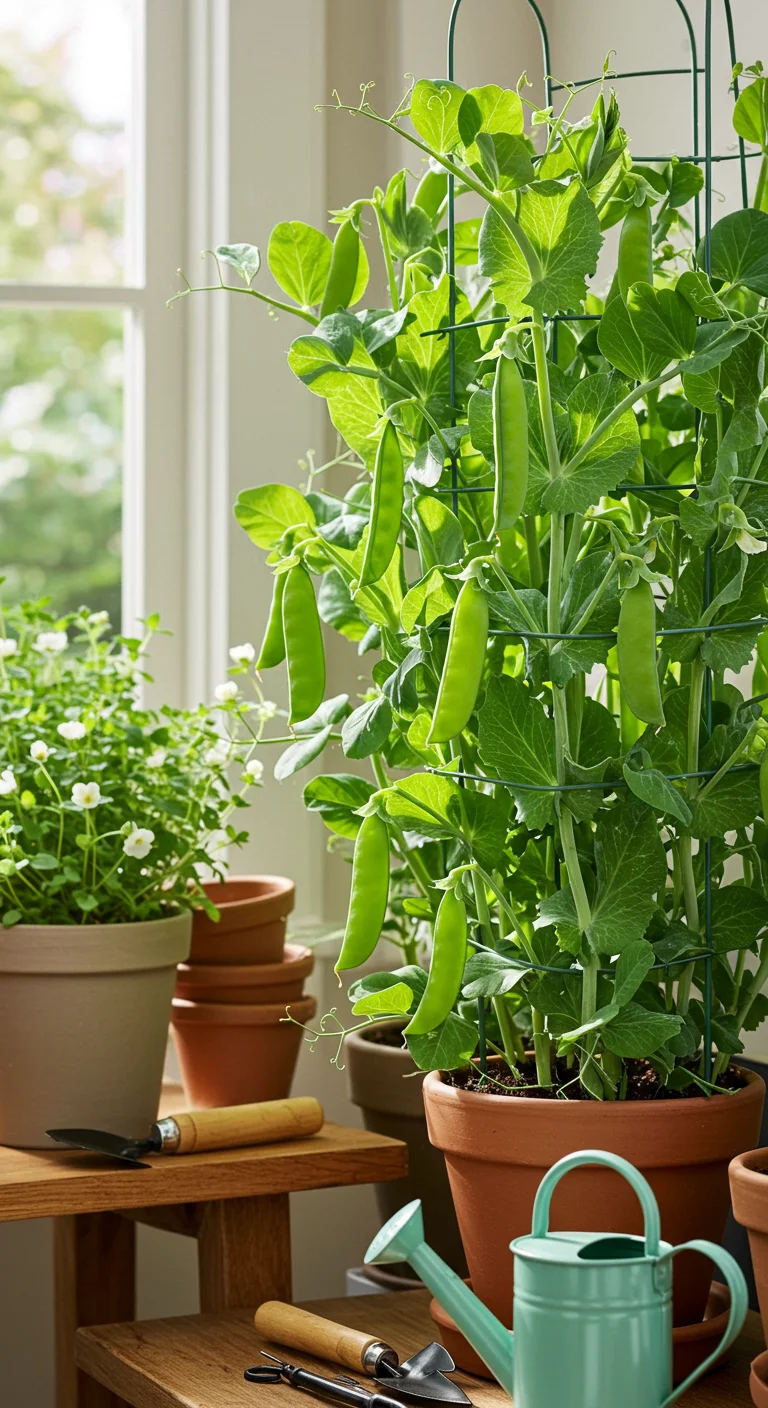
Snap peas are a delightful and easy-to-grow vegetable that can thrive indoors, making them perfect for novice gardeners. These sweet, crunchy legumes grow well in pots or containers with a depth of at least 12 inches and require a sunny spot with 6-8 hours of light daily. Plant snap pea seeds in well-draining potting soil, and ensure they are spaced about 2 inches apart for optimal growth. With proper watering and support for climbing, you can enjoy a bountiful harvest in as little as 60 days. Regularly check for pests, and don’t forget to pick the pods when they are young for the sweetest flavor. Indoor gardening with snap peas not only provides fresh produce but also adds greenery to your living space!
21. Mint: The Refreshing Herb That Grows Wild
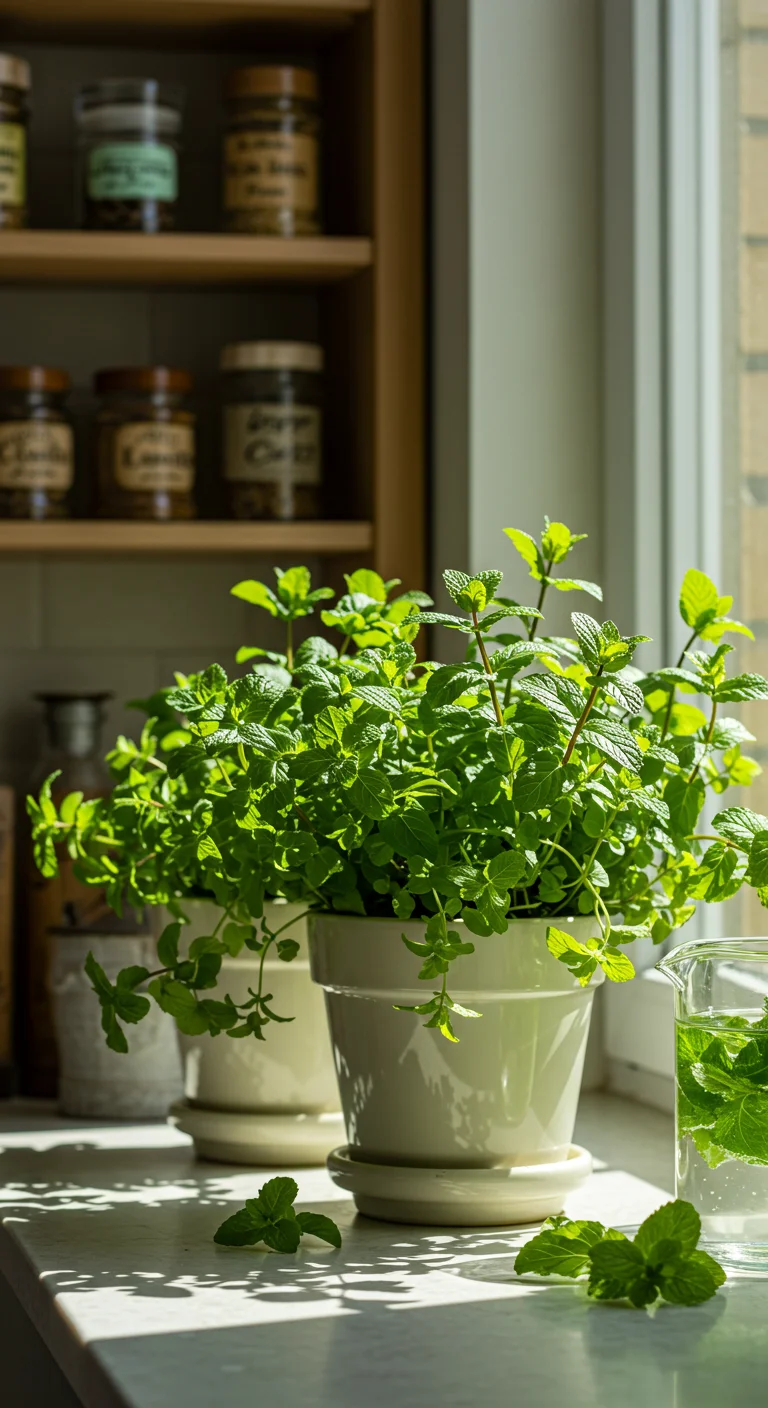
Mint is an incredibly versatile herb that thrives indoors, making it an excellent choice for novice gardeners. Known for its refreshing aroma and flavor, mint can be grown in pots or containers, which prevents its invasive tendencies. Choose a well-draining potting mix and place your mint in a location with bright, indirect sunlight. Water the plant regularly, ensuring the soil remains moist but not soggy. Mint can be harvested continuously—just snip off the leaves as needed, and it will keep growing. This hardy herb is perfect for culinary use in teas, salads, and desserts, and its ability to grow in various indoor conditions makes it a must-have for any indoor garden enthusiast.
22. Cabbage: Compact Varieties for Indoor Crunch
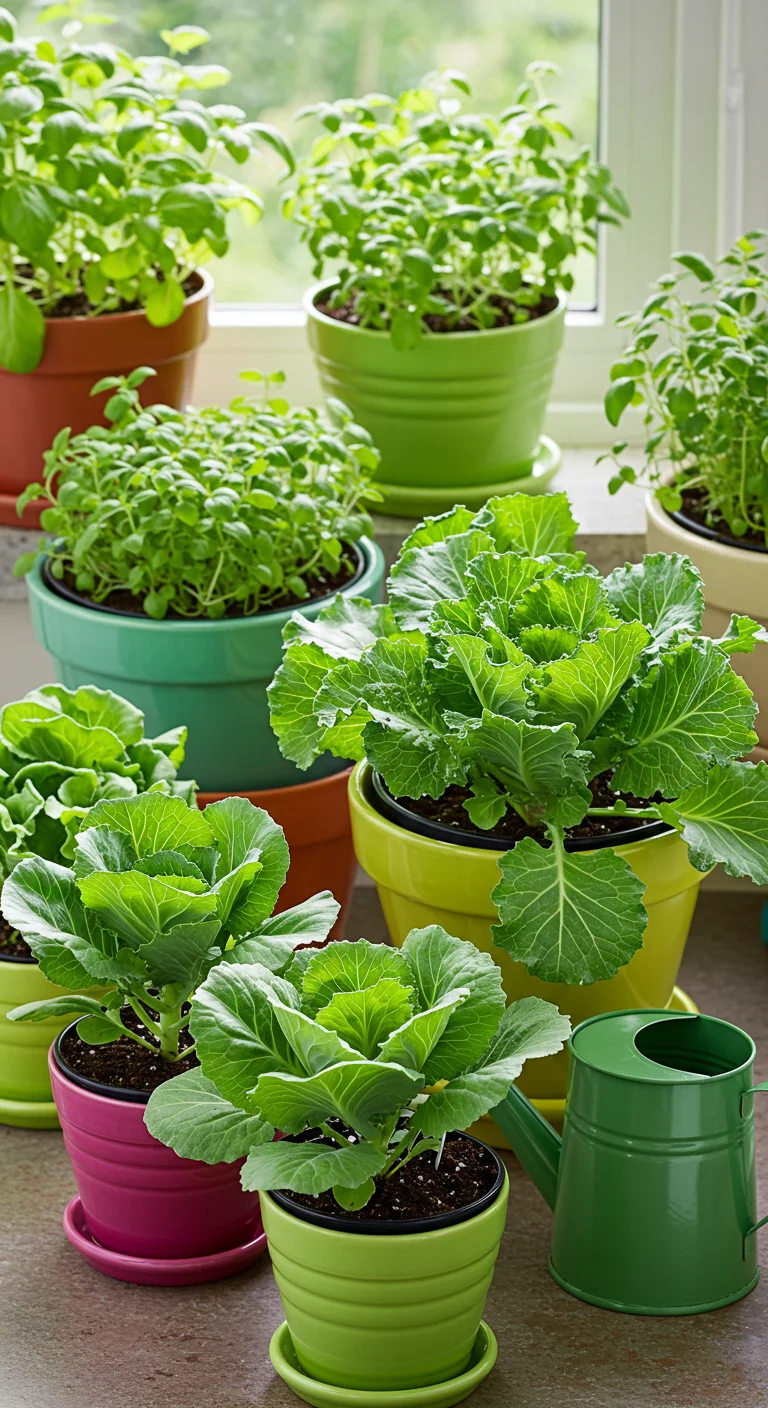
Cabbage is an excellent choice for indoor gardening, particularly compact varieties such as ‘Tennis Ball’ and ‘Mini Napa’, which thrive in limited spaces. These dwarf cabbages grow to about 6-12 inches tall, making them perfect for small pots or containers. They require at least 6 hours of bright, indirect sunlight daily and prefer a well-draining potting mix enriched with organic matter. Regular watering is essential to maintain moisture, but be cautious to avoid overwatering, as this can lead to root rot. Additionally, indoor cabbage can be harvested young for tender leaves or allowed to mature for a crunchier texture. With their vibrant green leaves and ease of care, compact cabbages bring both beauty and nutrition to your indoor garden.
23. Kohlrabi: The Unique Veggie That Thrives Indoors
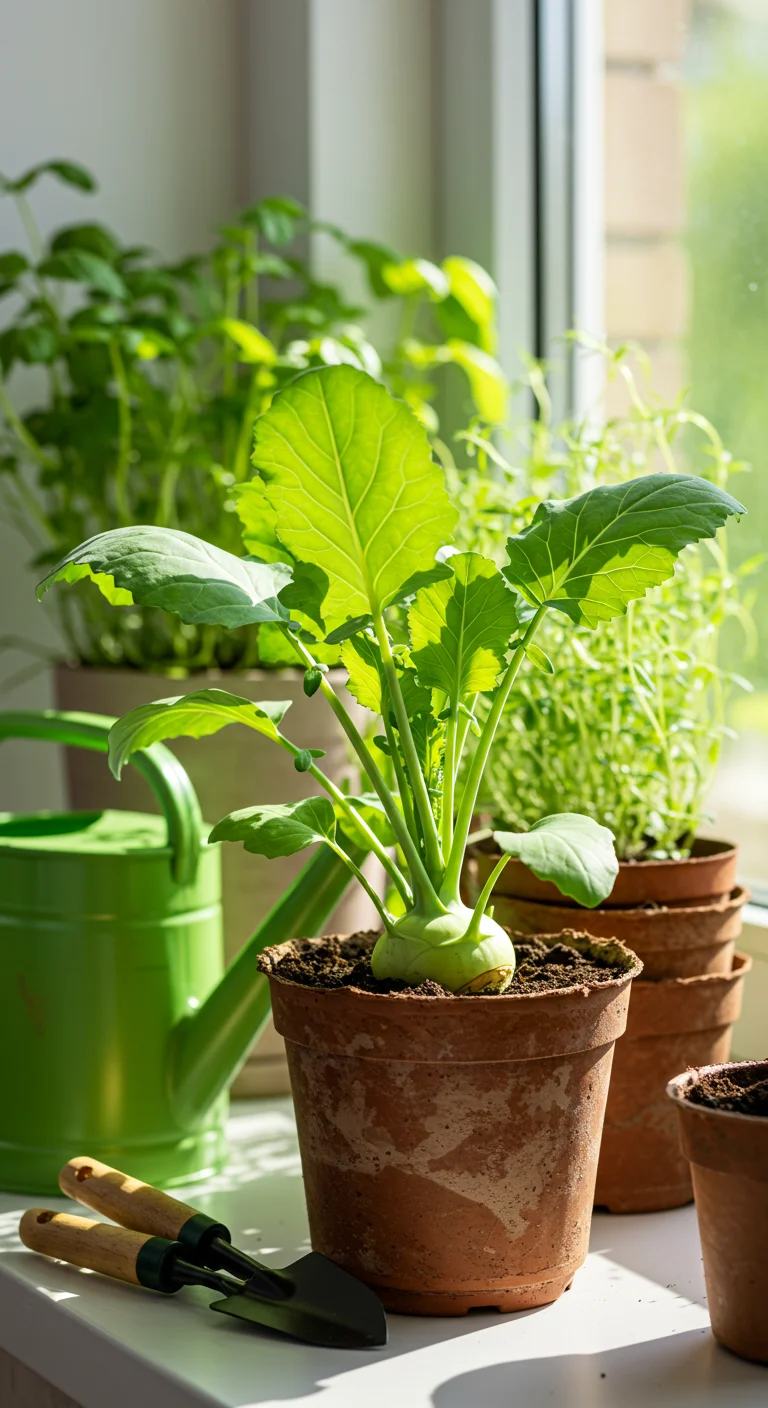
Kohlrabi, a unique member of the cabbage family, is an excellent choice for indoor gardening due to its compact size and rapid growth. This intriguing vegetable, which can be green or purple, thrives in containers and requires minimal space, making it perfect for windowsills or small pots. To successfully grow kohlrabi indoors, plant seeds in well-draining potting soil and ensure they receive 6-8 hours of bright, indirect sunlight daily. Keep the soil consistently moist but not waterlogged and enhance growth with a balanced liquid fertilizer every few weeks. In about 6-8 weeks, you’ll be rewarded with crisp, tender bulbs that can be harvested and enjoyed raw in salads or cooked in various dishes, adding both flavor and nutrition to your meals.
24. Eggplant: Small Space, Big Flavor with Mini Varieties
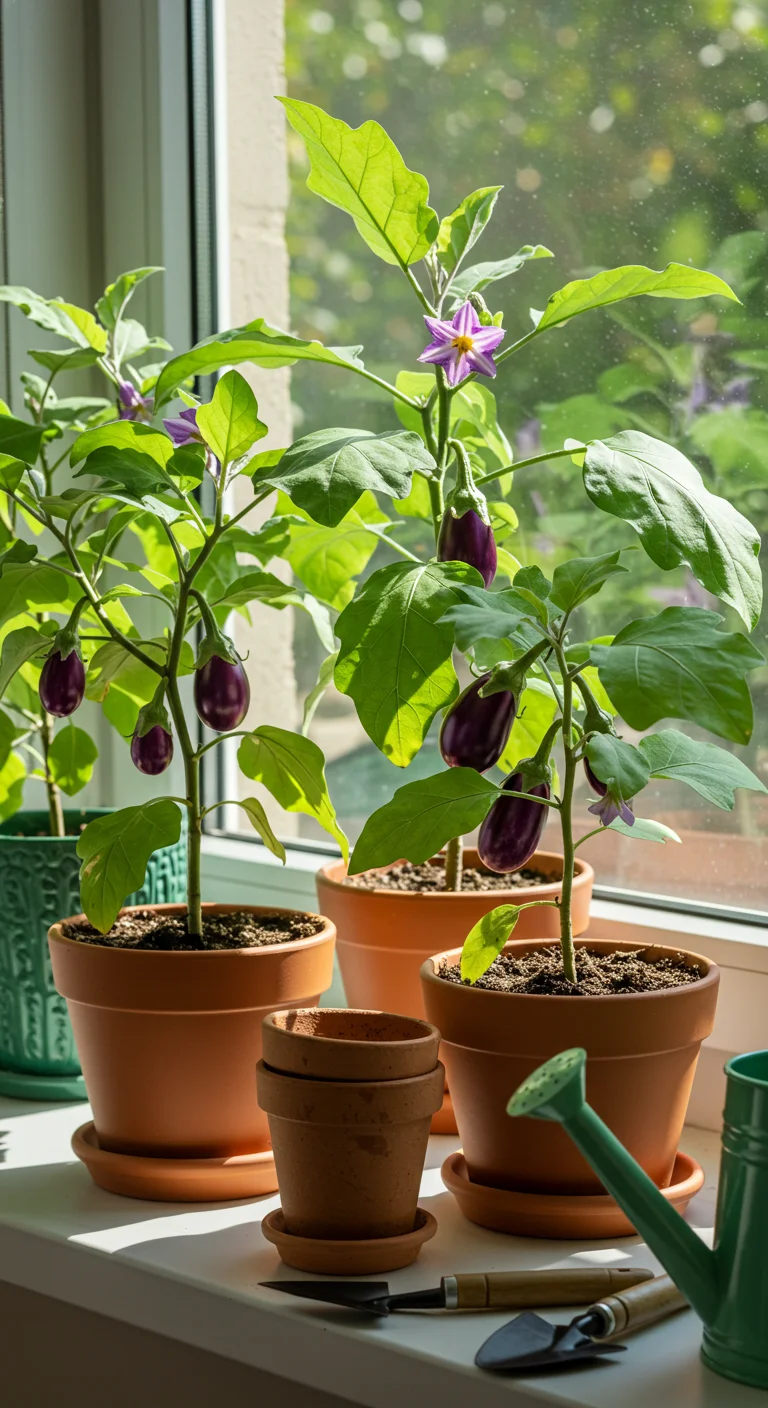
Eggplants, particularly mini varieties like ‘Fairy Tale’ and ‘Ping Tung Long,’ are perfect for small indoor spaces while offering a burst of flavor to your dishes. These compact plants thrive in pots that are at least 12 inches deep and can be grown on sunny windowsills or in grow tents. They require consistent watering and well-draining soil enriched with organic fertilizers to support their growth. Additionally, mini eggplants are not only decorative with their vibrant purple and white hues but also yield a bountiful harvest that can enhance your cooking with their rich taste. By choosing these smaller varieties, you can enjoy the satisfaction of growing your own vegetables without the need for extensive garden space.

